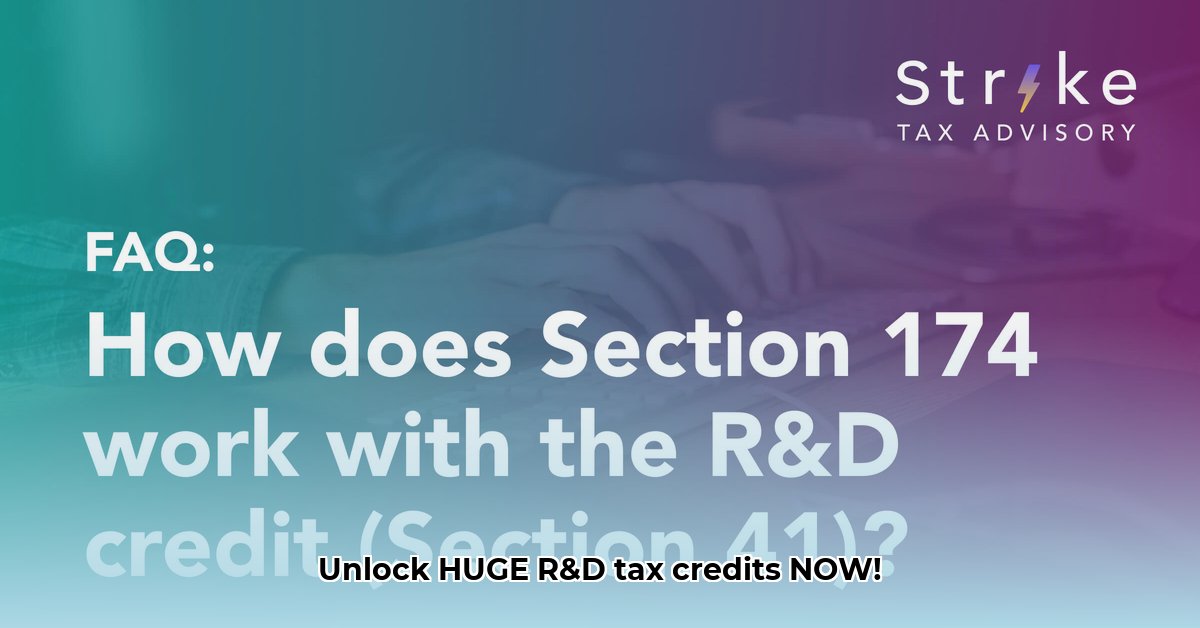
Understanding the IRC Section 41 Research Tax Credit
Many businesses unknowingly leave money on the table by overlooking the significant tax benefits available through the IRC Section 41 research credit. This credit incentivizes innovation by rewarding companies that invest in research and development (R&D). This guide provides a clear, step-by-step approach to understanding and claiming this valuable credit. Are you ready to significantly reduce your tax burden while fostering innovation? For further assistance, check out these helpful resources.
Key Definitions: Decoding the Jargon
Before we dive into the calculations, let's clarify some key terms:
Qualified Research Expenses (QREs): These are the costs directly related to your company's innovative projects. Examples include employee salaries, materials, and contract research expenses directly contributing to developing new or improved products, processes, techniques, inventions, or formulas. (Think of it as the cost of actively trying to solve a technological problem.)
Base Amount: This is a crucial figure used to calculate your maximum allowable credit. The calculation varies depending on the size and history of your business (more on this below).
In-House Research: Research conducted by your company's employees within your own facilities.
Contract Research: Research outsourced to external organizations, like universities or specialized research firms.
Calculating Your IRC Section 41 Credit: A Step-by-Step Guide
Calculating your credit isn't straightforward; it involves several steps. Let's walk through the process, addressing different scenarios along the way:
Step 1: Determining Your Qualified Research Expenses (QREs). Carefully document all expenses directly related to your qualified research activities. This includes:
- Employee wages for those directly involved in R&D.
- Costs of materials consumed during the research process.
- Payments to outside organizations for contracted research.
Step 2: Calculating Your Base Amount: This step differs significantly for startups and established businesses:
Startups (first five years): Typically, the base amount is 3% of your gross receipts. Remember to exclude certain items from your gross receipts calculation as outlined in IRS guidelines. Did you know that improperly calculating this can significantly impact your credit?
Established Businesses: This involves a more complex formula, comparing your current year's QREs to previous years' QREs and gross receipts. Engaging a tax professional is highly recommended for this scenario.
Step 3: Determining Your Credit: Generally, the credit is 20% of your qualified research expenses exceeding your base amount. This is calculated as: Credit = 20% * (QREs - Base Amount) . The maximum credit is capped at your calculated base amount.
Step 4: Handling Contract Research: Expenses paid for contract research are treated differently than in-house research expenses. Ensure you understand these distinctions to avoid errors in your calculations.
Specific Scenarios and Examples
Let's illustrate the calculation with a simple example for a startup in its first year:
Example: A startup has gross receipts of $500,000 and QREs of $200,000.
- Base Amount: $500,000 * 0.03 = $15,000
- Excess QREs: $200,000 - $15,000 = $185,000
- Research Credit: $185,000 * 0.20 = $37,000
This startup would be eligible for a $37,000 credit.
Common Pitfalls and Problem Solving
Avoiding common mistakes is crucial. Here are some to watch out for:
- Poor Record-Keeping: Lack of thorough documentation is the most frequent cause of rejected claims. Maintain detailed records of every expense.
- Incorrect Expense Classification: Only include expenses directly attributable to qualified research. Double-check every entry.
- Overlooking Optimization Strategies: Seek professional advice to explore potential strategies for maximizing your claim.
Interaction with Other Credits and Record-Keeping Best Practices
The Section 41 credit may interact with other tax credits. Consult a tax professional to understand any interactions. Meticulous record-keeping is essential for successful claims. Keep detailed documentation (invoices, receipts, employee timesheets) for every expense to ensure compliance.
Resource Guide
- IRS Publication 966: (https://www.irs.gov/pub/irs-prior/p966--2022.pdf) Provides comprehensive information on the research credit.
Conclusion
The IRC Section 41 credit offers a substantial opportunity to reduce your tax burden while fostering innovation. While the calculation can be complex, by following these steps and seeking professional guidance when necessary, you can successfully claim this valuable credit. Don't hesitate to consult a tax advisor to maximize your benefits.